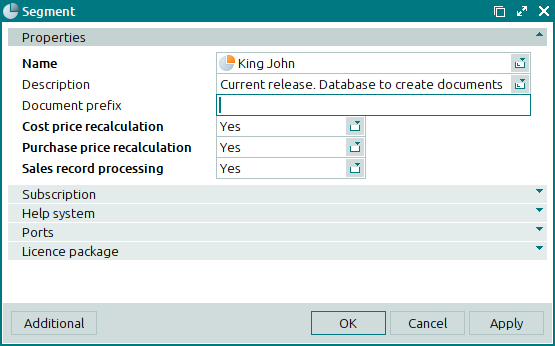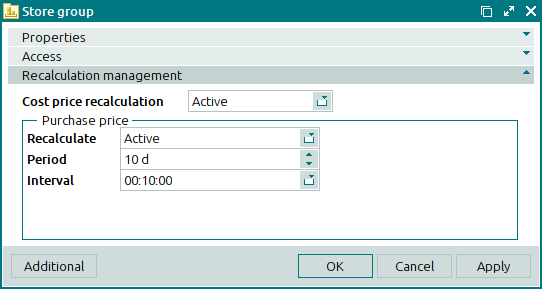© Tillypad 2008-2014
The Cost price calculation task is used to calculate the cost prices of stock items and stock on hand on a specified date. It runs documents on the store.
The task processes store documents by the store groups that belong to the given segment.
It is started and stopped in the directory. If the Cost price recalculation field is set to Yes, the task recalculates the cost price and stock on hand for all store groups that belong to the segment.
This task calculates cost price and stock on hand using the available documents. It includes documents whose statuses have been changed as well as all their associated documents. For example, suppose the receipt of a stock item was registered in a stock-in record, while the consumption of the stock item was accompanied by two production records and one stock adjustment record. When you change the price of the stock item in the stock-in record, this will impact both the stock-in record and the associated production and stock adjustment records.

If you select No, the task will not be started, and the documents will not be run by store.
You can also start the Cost price calculation task manually in the list.
For each store group in the directory, you need to indicate whether this store group’s data is to be used by the cost price and stock on hand calculation tasks. If the Cost price recalculation field is set to Active, the documents created in the stores that belong to this group are taken into account when the cost price and stock on hand are calculated. If Inactive is selected, the task will not use the store documents that belong to this store group.

This is a resource-intensive task. If the segment where the task is carried out has performance issues, we recommend starting the task when the load on the segment is minimal.
You cannot set up a schedule for this task, but the user can stop the task during high server load and restart it when the server is not loaded with other tasks. For example, during the workday the task can be stopped; at night, it can be launched to process store documents. How often the task must be started depends on how often you need to update data about the current stock on hand and to run documents on store.

